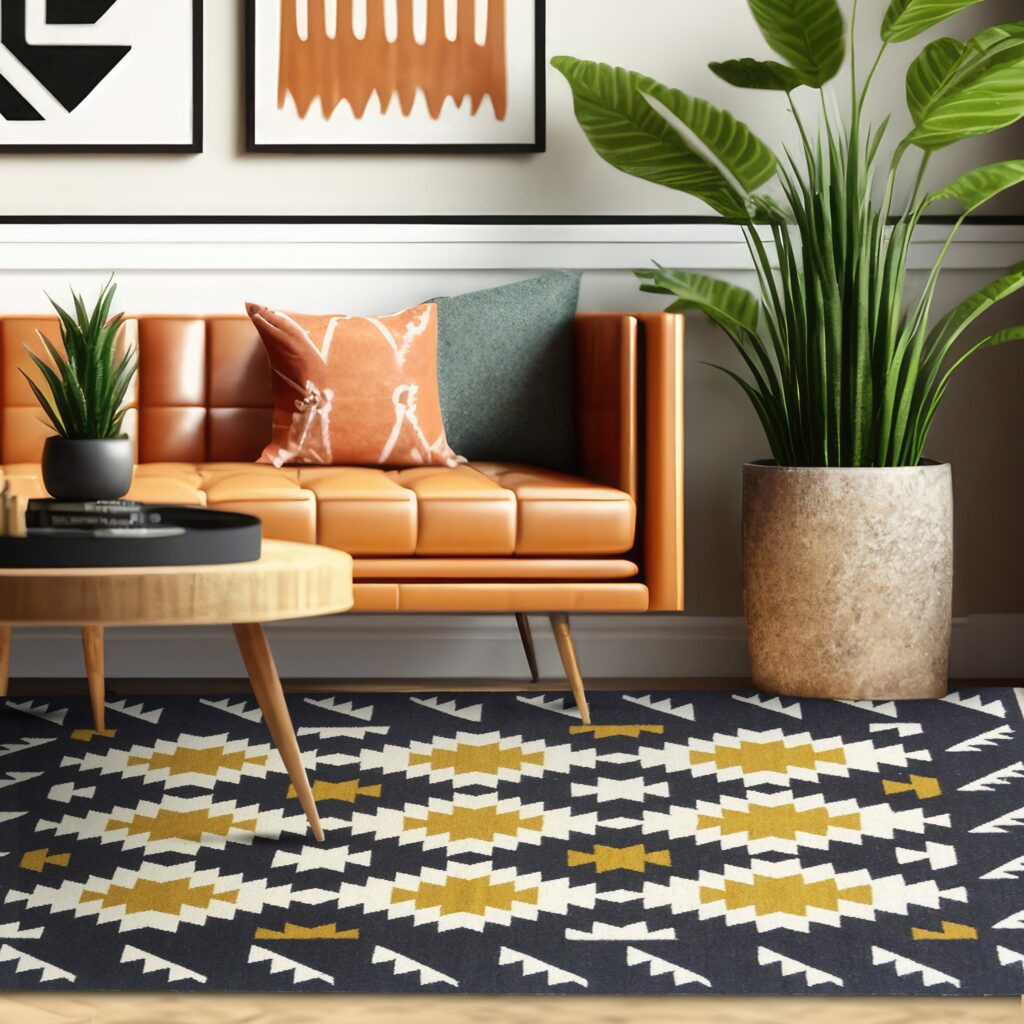Traditional Techniques
The Timeless Art of Handwoven Kilims: More Than Just a Rug
In a world of mass-produced home décor, few items combine artistry and history as elegantly as a handwoven kilim. At first glance, a kilim may appear simply as a beautiful flat-weave rug – but look closer, and you’ll discover that these these flat-woven rugs, made by skilled artisans across regions such as Rajasthan and Gujarat, carry generations of tradition, deep-rooted cultural symbolism, and an unmistakable human touch.
So what exactly makes a kilim different from your standard rug, and why does it often come with a higher price tag? Let’s unravel the story.
What Is a Kilim? And How Is It Different?
A kilim is a flat-weave rug made without knots. Unlike tufted or machine-made rugs, which are created quickly using synthetic materials and uniform designs, kilims are crafted by hand using a weft-faced weaving technique. In this method, artisans tightly interlace weft threads over the warp to create intricate, geometric patterns – a process that requires not only technical skill but immense patience and focus.
The result is a lightweight, reversible textile that’s less bulky than pile rugs, yet often more vivid and detailed in its patterns.
A Tradition Passed Down Through Generations
In India, kilim weaving is more than just a craft – it’s a living tradition. Each one is not only a piece of décor but a reflection of the weaver’s culture, often telling stories through symbolic motifs and regional patterns.
Many of the artisans are from rural communities where weaving skills are passed down through generations, often from mother to daughter. Each region brings its own design language: from the bold tribal motifs of Rajasthan to the earthy color palettes of Gujarat, Indian kilims are as diverse as the country itself.
These aren’t just rugs – they’re cultural expressions. Many kilims feature motifs that symbolise fertility, protection, nature, or community, all woven into the design without the use of patterns or blueprints. What you’re seeing is truly an artisan’s memory and heritage in thread form.
Unlike machine-made rugs, where every unit is a near-perfect replica, each kilim carries slight imperfections – signs of the human hand and a reminder of the artisan’s presence. These small irregularities give each piece its own identity and soul.
Why Kilims Cost More – and Why They’re Worth It
It’s easy to see a higher price tag and assume it’s just for aesthetics. But the cost of a handwoven kilim reflects:
Labor-Intensive Craftsmanship: It can take weeks or even months to weave a single kilim by hand, depending on size and complexity.
High-Quality Materials: Most traditional kilims are made from 100% wool or a wool-cotton blend, often dyed with natural pigments such as indigo, tumeric and madder root. These materials age beautifully and can last for decades.
Cultural Value: You’re not just buying a rug – you’re preserving an ancient art form and supporting communities who continue these traditions against the tide of mass production in a rapidly modernising world.
Unique by Nature: No two handwoven kilims are the same. You’re not buying a product off a production line – you’re acquiring a one-of-a-kind piece with its own story.
A Statement of Substance
Kilims aren’t just a visual accent – they’re conversation starters, heirlooms, and stories underfoot. Whether you hang one on a wall, drape it over furniture, or use it as a statement piece in your living space, a handwoven kilim brings authenticity and history into the modern home.
So next time you consider investing in a kilim, remember: you’re not paying more – you’re gaining more. More heritage, more craft, more character.
And that’s something no machine can replicate.
Discover our stunning selection of Kilims here: Handwoven Kilims – Allsop Furniture

